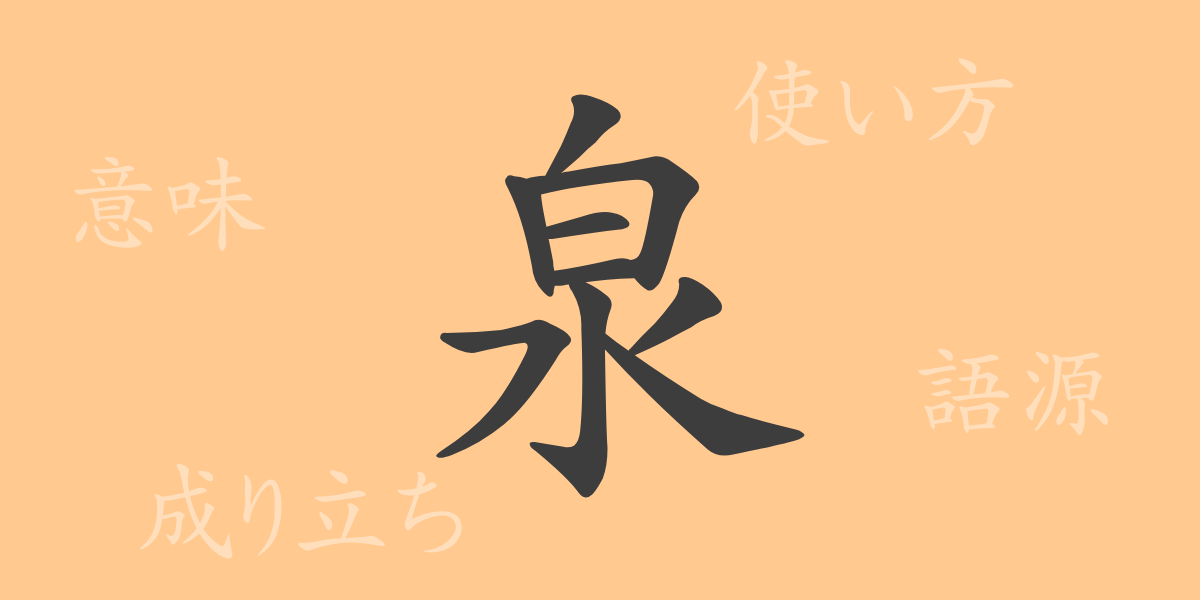The kanji “泉” (せん), symbolizing a water source, is an indispensable natural blessing in our lives. This article delves deeply into the kanji “泉,” exploring its origins, meanings, usage, and its presence in idioms and proverbs. Understanding the historical and cultural background of this character helps us appreciate the power of words more profoundly.
Origins of 泉 (せん)
The character “泉” originates from ancient Chinese oracle bone script. Initially, “泉” depicted water bubbling up from the ground, with the top part “白” representing water bubbles and the lower part “巛” symbolizing flowing water. Over time, this character has become the general term for natural water sources.
Meaning and Usage of 泉
The kanji “泉” specifically refers to water naturally springing from the ground. Broadly, it also implies any water source or spring, and metaphorically, it can represent the source of wisdom or ideas. Thus, “泉” is not only used in contexts directly related to water but also in various other scenarios, demonstrating its versatility.
Pronunciation, Stroke Count, and Radical of 泉
“泉” is a familiar character within Japanese kanji.
- Pronunciation: The on’yomi (Sino-Japanese reading) is “セン”, and the kun’yomi (native Japanese reading) is “いずみ”.
- Stroke Count: The character has a total of 9 strokes.
- Radical: The radical is “水” (みず), associated with water.
Expressions and Proverbs Using 泉
There are many idioms and proverbs that include “泉”. Here are some examples:
- “名水百選” (めいすいひゃくせん) – Refers to the top one hundred distinguished waters selected across Japan.
- “泉鏡花” (せんきょうか) – A metaphor for something as transient as a flower reflected on the water’s surface.
- “湯の泉” (ゆのいずみ) – Another term for a hot spring.
- “泉州水茄子” (せんしゅうみずなす) – A variety of water eggplant cultivated in the Senshu area.
- “泉下の人” (せんかのひと) – A euphemism for someone who has passed away.
Conclusion on 泉
The kanji “泉” vividly symbolizes the natural phenomenon of water emerging from the ground. This character not only reminds us of the importance of water in our lives but also shows how it has been integrated diversely within the culture and language. By understanding its background, we can reappreciate the depth of the Japanese language and the significance of each character that composes it.

























